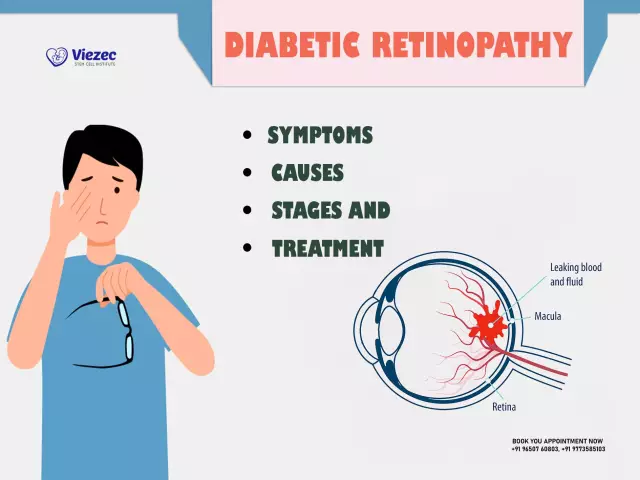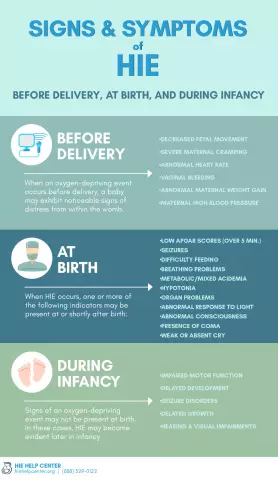- Author Curtis Blomfield [email protected].
- Public 2023-12-16 20:44.
- Last modified 2025-01-23 17:01.
Diabetic encephalopathy is a lesion of certain structures in the brain. This occurs as a result of metabolic and vascular disorders that occur and develop with a disease such as diabetes.
This ailment is not an independent pathology, as it can develop only as a result of already existing disorders in the functioning of the body.
Who gets sick more often?

According to statistical studies, type I diabetics most often suffer from this disease. Moreover, depending on the statistical sample, the frequency of this disease can reach 80%.
Feature of DE is the difficulty of its differentiation from other types of encephalopathy.
Reasons
Diabetic encephalopathy can develop for several underlying reasons:
- Microangiopathy. It is a process in which a violation develops in the stability of the walls and the permeability of the vessels of small arteries, as well as capillaries.
- Metabolic disorders,leading to the process of damage in nerve fibers and cells.
Pathological causes

In addition to the main reasons for the development of the disease, there are also pathological factors that aggravate diabetes mellitus and lead to the development of DE. These include:
- Age of the patient (senile and elderly).
- Being obese resulting in overweight.
- Impaired lipid metabolism, as well as atherosclerotic manifestations.
- Persistent elevated blood glucose.
The main damaging factor

But still in the formation of diabetic encephalopathy (ICD 10) microangiopathy is the main damaging factor. As a result, nerve fibers and cells undergo oxygen and energy starvation. As a result of such starvation, the body is forced to switch to the path of anaerobic production of vital substances for its functioning. This process is not as efficient and as a result, toxins and other harmful substances accumulate in the brain cells. It is under their influence that irreversible brain damage occurs.
Existing metabolic disorders in the body have an aggravating effect on the condition that has arisen, and also catalyze the restructuring of nerve fibers. Which, in turn, contributes to the process of slowing down the transmission of nerve impulses.
Clinical manifestations
Clinical manifestations of diabeticencephalopathies (ICD 10) take a long time to develop. It is for this reason that DE is most often diagnosed in elderly patients. In rare cases, encephalopathy can develop rapidly against the background of a previous stroke of the brain or in acute conditions of a hypo- or hyperglycemic nature.
Symptoms

Unfortunately, diabetic encephalopathy is not accompanied by any specific symptoms, making it difficult to diagnose and differentiate. This type of encephalopathy may be accompanied by symptoms that are also characteristic of atherosclerosis or hypertension.
A patient suspected of having DE may present with symptoms such as:
- Headaches - can be of varying severity and manifest as a slight malaise, or as a feeling of fullness or squeezing.
- Asthenic syndrome can be expressed in the form of weakness, irritability, impaired concentration, as well as mental lability and increased emotionality.
- Neurological manifestations - the patient may have an unsteady gait, feel dizzy and tinnitus.
- Disturbances in the higher functions of the brain. The patient may experience impaired memory and fine motor skills, difficulty in perceiving information, loss of reading ability, manifestation of depression and apathy.
- Another symptom of diabetic encephalopathy is the state of fainting and convulsivesyndrome. Moreover, convulsions can manifest both localized and generalized.
As a rule, the patient is not always able to adequately assess his condition, so it will not be superfluous to use a serious diagnostic search, as well as the help of relatives and friends.
DE manifestations

At the initial stage of the disease, its signs are not very pronounced. Therefore, it is often difficult for the patient to answer when the first symptoms appeared.
Specialists believe that the primary manifestations of diabetic encephalopathy are subtle memory impairment, problems with falling asleep, and changes in psycho-emotional status.
These violations can be explained by the fact that the brain has to work in conditions of lack of energy and oxygen. Under such conditions, nerve cells are not able to work fully and compensatory mechanisms begin to emerge. However, if these mechanisms are activated for a long time, they fail, which leads to the process of accumulation of toxins in the brain.
Stages of development of encephalopathy in diabetics
The disease has several stages, while the patient does not feel any symptoms at the first stage. Only when the disease develops and passes to the second stage, the first signs appear:
- At the first stage. There are practically no manifestations. Unstable blood pressure, mild malaise, dizziness are often confused with symptoms of vegetative-vascular dystonia. The neurologist is the most visitedspecialist at this stage.
- In the second stage. The head starts to hurt more, orientation is disturbed, the neurological status becomes more pronounced.
- In the third stage, the symptoms are pronounced. Cerebral circulation deteriorates significantly. Headache, unsteadiness of gait, dizziness, general weakness, insomnia. Pre-fainting often occurs.

Syndromes of the disease in question
Diabetic encephalopathy in the ICD with code 10 manifests itself in the form of several syndromes that can be called basic:
- Asthenic syndrome. It is characterized by a state of general weakness, lethargy and fatigue. Often this syndrome manifests itself one of the first. Also, a patient with asthenic syndrome experiences disability, may be overly irritable and emotionally unstable.
- Cephalgic syndrome. DE may be accompanied by headaches of varying intensity. If we rely on the descriptions of the patients themselves, then in some it can manifest itself in the form of squeezing or squeezing like a “ring”, in others it is similar to migraine sensations, in others it manifests itself in the form of a feeling of heaviness in the head. Some patients generally note that the headache is quite mild.
- Vegetative dystonia. This syndrome occurs in the vast majority of cases of manifestation of DE. Dystonia manifests itself in the form of an emerging feeling of heat, fainting and pre-syncope. In addition, vegetativedystonia can be characterized by disorders such as anisocoria (when the patient has pupils of different sizes), convergent disorders (difficulty moving the eyeballs), pyramidal disorders (for example, paralysis). The patient may also suffer from vestibular-ataxic symptoms such as unsteady gait or dizzy spells.
- Cognitive disorders. This syndrome of diabetic encephalopathy with code 10 is characterized by memory impairment, general lethargy, inability to absorb information. May contribute to the development of depressive and apathetic conditions.
- The final stage. This stage of the disease can be characterized by severe disorders of all parts of the nervous system. The patient has a violation of motor activity, there are critical attacks of headaches and convulsive syndromes, the sensitivity of different parts of the body is disturbed, painful sensations appear in the liver, kidneys and other organs.

Treatment
Treatment of diabetic encephalopathy can be divided into three main areas:
- Maintain adequate blood sugar levels. It is the maintenance of blood glucose at the required level that is the main method of treatment and prevention of DE. Doctors also advise not to neglect preventive therapy. This improves the blood supply to the tissues of the nervous system and trophism.
- Treatment of metabolic disorders. With this type of therapy, doctors recommend takingantioxidants (for example, "Espa-lipon"), vitamins of groups A, E, C and B. Also, patients are prescribed cerebroprotectors ("Piracetam", etc.).
- Treatment of microangiopathy. Doctors correct vascular disorders with the help of Pentoxifylline, which normalizes blood flow in the body and reduces blood viscosity. This drug does an excellent job of removing toxins from the patient's brain.
At the same time, doctors everywhere use drugs such as Cavinton, Sermion, Vinpocetine and others for the treatment of angiopathy.






